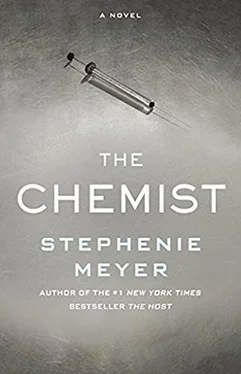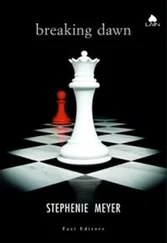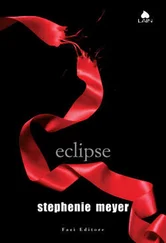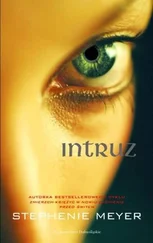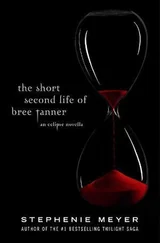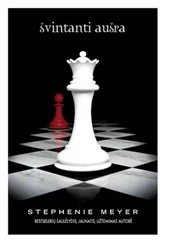She sucked in a breath through her teeth.
This was a name she knew – knew and loathed. Being attacked from the outside was horrific enough. She felt the deepest revulsion for the kind of person who was born to the freedom and privilege of a democratic nation and then used that very privilege and freedom to attack its source.
This domestic-terrorist ring had several names. The department called them the Serpent, thanks to a tattoo that one of their late chiefs had possessed – and the line from King Lear . She’d been instrumental in shutting down a few of their larger conspiracies, but the one they’d accomplished still gave her the occasional nightmare. The file didn’t say who had made the first contact, only that an accord had been reached. If de la Fuentes did his part, he would receive enough money, men, and arms to take out the larger cartel. And the terrorists would get what they wanted – destabilization of the American nation, horror, destruction, and all the press they’d ever dreamed of.
It was bad.
Because what was better for destabilization than a deadly, laboratory-created influenza virus? Especially one you could control.
She could tell when the narrative shifted from the analysts’ point of view to the spies’. Much clearer pictures.
The spies were calling it TCX-1 (no notation in the files on what the letters stood for, and even with her rather specialized background in medicine, she had no idea). The government was aware that the TCX-1 superflu existed, but they thought they’d eradicated it during a black ops raid in North Africa. The lab was destroyed, the responsible parties apprehended (and executed, for the most part). TCX-1 hadn’t been heard of again.
Until it showed up in Mexico a few months ago, along with a supply of the lifesaving vaccine, already incorporated into a new designer drug.
She was starting to get a headache, the kind that was extremely localized. It was a hot needle stabbing directly behind her left eye. She’d slept a few hours after checking in and before diving into the files, but it hadn’t been enough. She made the short walk to her toiletry bag beside the sink, grabbed four Motrin, and swallowed them dry. She realized two seconds later that her stomach was totally empty, and the Motrin would no doubt burn a hole through the bottom as soon as it hit. In her bag she always had a stash of protein bars, and she quickly gnawed her way through one as she returned to her reading.
The terrorists knew they were always being watched, so what they’d given de la Fuentes was information. De la Fuentes would have to provide the manpower – preferably innocuous, unremarkable manpower.
Enter the schoolteacher.
From what the best analytical minds could piece together, Daniel Beach, all-around good guy, had gone to Egypt and acquired TCX-1 for a hungry, unstable drug lord. And he was clearly still part of the plot. From the evidence available, it appeared he would be the one dispersing TCX-1 on American soil.
The inhalable designer drug containing the vaccine was already in circulation; valued customers would never be in danger, and perhaps this was a second part of the plot. Even the most unstable drug lord had to be pragmatic where money was concerned. So maybe noncustomers would learn just where salvation waited – and that would create a whole new desperate clientele. Daniel Beach was no doubt immune by now. It wasn’t a difficult job to circulate the virus; it would be as simple as wiping an infected swab across a surface that was regularly handled – a doorknob, a countertop, a keyboard. The virus was engineered to spread like the proverbial wildfire – he wouldn’t even need to expose that many people. Just a few in Los Angeles, a few in Phoenix, a few in Albuquerque, a few in San Antonio. Daniel already had hotel reservations in each of these cities. He was due to embark on his deadly journey – ostensibly to visit more Habitat for Humanity sites as a preparation for next fall’s school field trip – in three weeks.
The Serpent and de la Fuentes were attempting to orchestrate the most debilitating attack that had ever been perpetrated on American soil. And if it was true that de la Fuentes already had the weaponized virus and the vaccine, they had an excellent chance of success.
Carston hadn’t been kidding. What she’d originally thought had been an act to play to her sympathies now appeared to be an amazing demonstration of self-control. Of all the potential disasters that had crossed her desk – back when she’d had a desk – this was one of the very worst, and she’d seen some bad things. There had even been one other biological weapon with the potential to do this kind of damage, but that one had never made it out of the lab. This was a feasible plan already in progress. And it wasn’t hundreds of thousands of people dying they were talking about here – it would be closer to a million, maybe more, before the CDC could get control of the situation. Carston had known she would discover that fact. He’d deliberately downplayed the disaster so that it would sound more realistic. Sometimes the truth was worse than fiction.
The stakes were higher than she’d expected. This knowledge made it harder for her to justify her own little low-stakes game. Was the tight focus on saving her own life even defensible in the face of this kind of horror? She’d held a hard line in her conversation with Carston, but if there was any chance this story was more than a trap, did she have any choice but to try to stop it?
If Daniel Beach disappeared, de la Fuentes would know someone was onto him. Odds were, he would act sooner than he’d planned, ahead of schedule. Daniel had to talk, and he had to talk quickly. And then he had to go back to regular life, be seen, and keep the megalomaniac drug lord calm until the good guys could take him out.
In the beginning, it was standard operating procedure for Alex’s subjects to be released into the wild for a short time. This was a major part of her specialty; Alex was the best at retrieving information without damaging the subject. (Before Alex, Barnaby had been the best and only man for the job.) The CIA, the NSA, and most similar government sections had their own teams for interrogating subjects who were slated for disposal after the information was acquired. Over time, as she proved more successful than even the best of the other teams, Alex had gotten a lot busier. Though the other sections would rather have stayed insular, kept the information with their own people, the results spoke for themselves.
She sighed and refocused on the now. Eleven pictures of Daniel Beach lay in a row across the pillows at the head of the bed. It was hard to reconcile the two sides of the coin. In the early pictures he looked like a Boy Scout, his softly waving hair somehow projecting innocence and pure intentions. But though it was obviously the same face in the spies’ photos, everything was different. The hair was always hidden under hoods or ball caps (one of her own frequent disguises); the posture was more aggressive; the expressions were cold and professional. She’d worked on professionals. It took time. Possibly more than one weekend. She looked at the two matching but contradictory faces again and wondered briefly if Daniel had an actual psychiatric disorder or if it was a progression she was looking at, and the innocent no longer existed at all.
Not that it mattered – yet.
The headache felt like it was searing a hole through the inside of her eyeball. She knew it wasn’t the hours of reading that had caused it. No, the decision looming in front of her was the source of the pain.
She gathered up all the files and stuffed them into a suitcase. The decimation of the population of the American Southwest would have to take a backseat for a few hours.
Читать дальше
